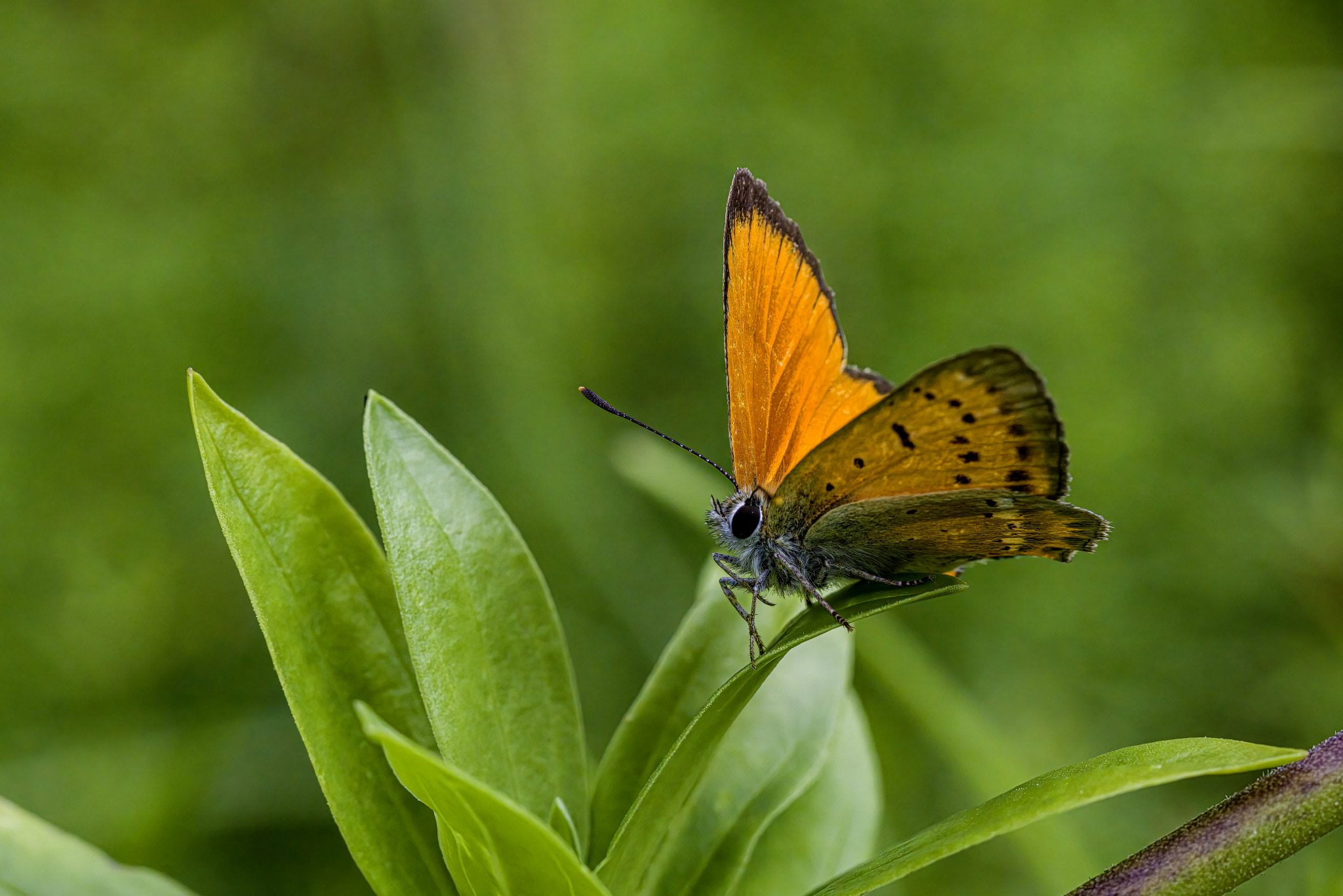Full size photo for free download
The Scarce Copper (Lycaena virgaureae) is a vibrant and beautiful butterfly known for its striking coloration and habitat preferences. Here’s a detailed overview of this captivating insect:
Description
- Size: The Scarce Copper is a small to medium-sized butterfly, with a wingspan ranging from 26 to 35 millimeters.
- Appearance:
- Males: Males are particularly striking, with bright orange wings adorned with a slight coppery sheen and small black spots. The hindwings have a distinctive black border.
- Females: Females are more subdued in color, with orange-brown wings featuring more pronounced black spots and a less vivid coppery sheen. Their hindwings are also edged with black.
- Underside: The underside of the wings in both sexes is pale with small black spots, providing effective camouflage when at rest.
Habitat
- Distribution: The Scarce Copper is found across parts of Europe and Asia, particularly in temperate regions. Its range extends from Scandinavia and the Baltic States down to the Alps and the Balkans.
- Preferred Environment: This species prefers open, sunny habitats such as meadows, grasslands, and forest clearings. It is often found in areas with abundant wildflowers and low-intensity agriculture.
Behavior and Ecology
- Diet:
- Adults: Adult Scarce Coppers primarily feed on nectar from a variety of flowers, including thistles, knapweeds, and buttercups.
- Larvae: The caterpillars feed on the leaves of plants in the dock family (Rumex), particularly Rumex acetosa (common sorrel) and Rumex acetosella (sheep’s sorrel).
- Flight Period: The adults are typically on the wing from June to August, depending on the region and local climate.
- Reproduction: Females lay their eggs singly on the underside of host plant leaves. The eggs hatch into larvae that feed on the leaves until they pupate.
Conservation Status
- Threats: The Scarce Copper faces threats from habitat loss due to agricultural intensification, urbanization, and changes in land use. The reduction in wildflower-rich meadows and grasslands has particularly impacted their populations.
- Conservation Efforts: Efforts to conserve this species focus on preserving and restoring its natural habitats. This includes maintaining traditional hay meadows, promoting low-intensity grazing, and protecting wildflower-rich grasslands.
Interesting Facts
- Coloration: The vivid coloration of the males makes them easily distinguishable from other copper species, particularly when they bask in the sun.
- Camouflage: The pale undersides of their wings provide effective camouflage against predators when they are at rest with their wings closed.
- Behavior: Males are often seen patrolling their territories in search of females, displaying their bright wings to deter rivals and attract mates.
Observing Scarce Coppers
- Best Places: To observe Scarce Coppers, visit wildflower-rich meadows, forest clearings, and grasslands during their flight period in the summer months.
- Watching Tips: Look for them basking in sunny spots or feeding on nectar from flowers. Their bright coloration and active behavior make them relatively easy to spot. Early morning and late afternoon are good times to observe them when they are less active and more likely to be resting.
The Scarce Copper (Lycaena virgaureae) is a dazzling butterfly that adds a splash of color to the landscapes it inhabits. Observing these butterflies can provide a deeper appreciation for the beauty and diversity of our natural world.unity to appreciate the wonders of the natural world.
Visited 930 times, 2 visit(s) today
Views: 1397
Subscribe to the newsletter:
